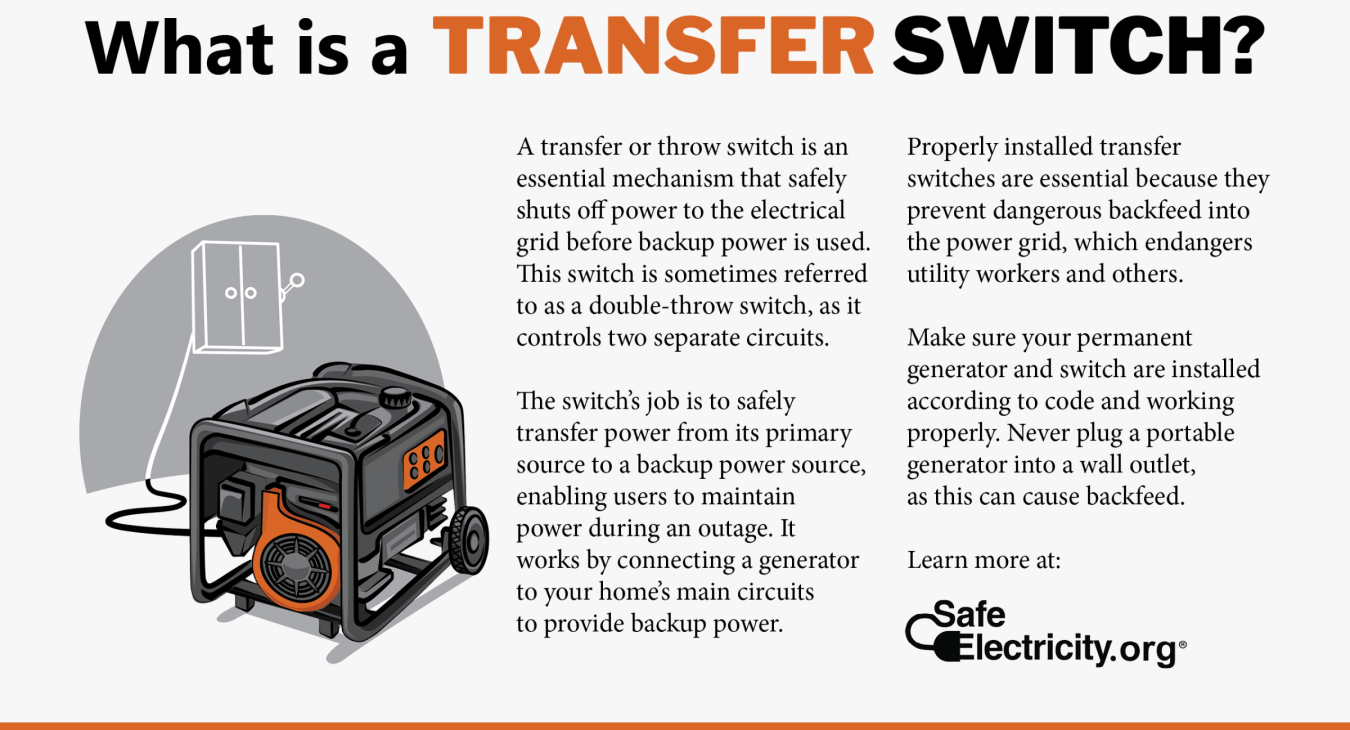Generator Safety
When the electricity goes out, your initial thought might be to run to the local hardware or big box store and buy a generator. However, using a generator should not be taken lightly, since it can be dangerous and even life-threatening if used incorrectly. There are several steps you should take before ever starting one up.
But first, homework
Before purchasing a generator, the first step is to research the best option for your home and budget. The second, and more important step, is to educate yourself on how to use one safely.
Homeowners can choose from two types of generators: standby and portable. Standby generators are installed directly into the home’s electrical system and are typically powered by natural gas or propane. These generators start automatically when the power goes out.
A portable generator is usually gas powered and is, well, portable. You can power appliances by plugging them into it. Your generator should have more output than the wattage of the electronics plugged into it. This way, the generator can create the extra electricity it takes for the initial power surge. Make sure there is nothing plugged into the generator when turning it on.
Safety tips
When you refuel a portable generator, make sure the engine is cool. Keep children and pets away from the generator, as it could burn them.
Generators pose electrical risks, especially when operated during inclement weather. Use a generator only when necessary during wet conditions. Protect the generator by operating it under an open, canopy-like structure and on a dry surface where water cannot form puddles or drain under it.
Generators can be deadly
Carbon monoxide fumes emitted by the gasoline engine on the generator can be deadly. Always operate your portable generator outdoors at least 20 feet from your home.
Misusing a portable generator or using a standby generator that is not installed correctly (and does not meet the electrical code) can cause backfeed, which puts others in danger. Backfeed happens when a generator feeds electricity back through a home’s electrical system and meter into the power lines. To prevent this dangerous scenario, standby generators should have a transfer switch installed by a licensed professional. Do not plug a portable generator directly into a home outlet or electrical system. Instead, use a properly rated extension cord to plug appliances into an outlet on the generator for power.
When not in use
Operate your generator once a month for 10 minutes to ensure it is running properly. Keep your generator well maintained and follow all manufacturer’s instructions. Have a standby generator installed in an easily accessible, weatherproof area.
For more electrical safety information, visit SafeElectricity.org.

